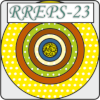Speaker
Description
Experimental results of a study of the properties of microfocus bremsstrahlung (Bs) generated in narrow inner silicon (Si) and tantalum (Ta) targets of a betatron with an electron energy of 18 MeV are presented. The targets were Si crystals 50 and 8 µm thick and Ta foil 13 µm thick oriented with a goniometer along the direction of the inner electron beam. The results showed a strong dependence of the shape of the angular radiation distribution on the target material and its orientation relative to the electron beam. Magnified radiographic images of the wire pairs of the radiographic image quality standard Duplex IQI showed that the resolution and contrast of their images depended on their position in the radiation cone, the target material, and its thickness. The results showed the role of absorption and refraction of radiation in the formation of magnified images of the edges of plastic and metal plates. Differences in contrast and sharpness of magnified images obtained using Si and Ta targets were determined by radiation of different regions of Bs spectrum. The sensitivity of detection of microobjects in the form of thin wires, narrow slits and thin inclusions inside of thick steel blocks was evaluated using radiation generated in the Ta target. The results were compared with the results obtained using X-rays of 450 kV X-ray tube with the focal size of 400 µm and the small-sized 7 MeV betatron with the focal size of 300 µm. The results obtained show the promise of using new microfocus sources based on compact betatrons with electron energy of several MeV for high-resolution radiography and tomography, as well as in laboratory experiments, for example, in materials science and X-ray optics.
This work was supported by the Russian Science Foundation, project no. 22-79-00249 (https://rscf.ru/project/22-79-00249/).
